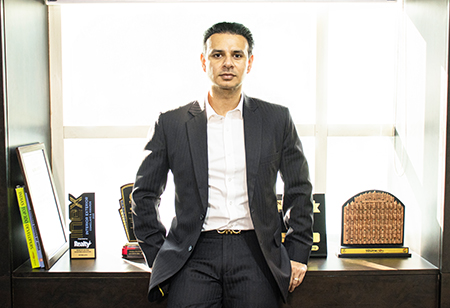 Magazine
Magazine

Aditya Kumar, the managing director at Victora Lifts, a leading elevator startup in South Asia, is a business leader and a dedicated philanthropist. As President of the Urbcare Foundation, he exemplifies commitment to social change and humanitarian causes. Admired for his relentless work ethic, Aditya champions social change, believing success should catalyze positive societal impact.
In a recent interaction with Industry Outlook, Aditya shared his insights on the current elevator and escalator manufacturing sector, key challenges, and other aspects.
Tell us about the current elevator & escalator manufacturing, along with the recent tech advancements.
The elevator and escalator manufacturing industry today is a field constantly on the move by adapting to ever-evolving technologies, safety demands, and environmental concerns. The elevator of yesterday is incompetent in comparison to the tech-infused behemoths gracing modern skyscrapers. Advancements in microprocessors, robotics, and artificial intelligence are taking place. We now see elevators integrating seamlessly with building management systems, optimizing traffic flow, and predicting potential glitches before they occur. Think of self-diagnosing systems, real-time energy monitoring, and even personalized cabins that adapt to your preferences.
On the other hand, escalators too are shedding their workhorse image through advanced features and techniques such as regenerative braking systems that harness the energy generated during descent and powering building lighting or other systems. Additionally, while touchless sensor technology promises hygienic rides, advanced materials like wear-resistant coatings extend the lifespan and reduce maintenance needs. Today, elevators and escalators are not mere transportation units, but intelligent nodes within a complex urban ecosystem.
Throw some light on a few key safety and reliability challenges in elevator manufacturing?
Despite numerous technological upgrades in recent times, one aspect that has remained paramount for the elevator manufacturing sector is safety. Since elevators demand a meticulous focus on reliability and redundancy, redundant safety systems such as multiple brakes and emergency power backups ensure smooth operation even in unforeseen circumstances. Similarly, stringent regulations, coupled with rigorous testing and inspection procedures are a crucial part of our manufacturing practices. The future holds further promise with predictive maintenance algorithms analyzing vast amounts of data to identify potential issues before they blossom into failures. With this proactive approach, powered by big data and machine learning, the industry promises to elevate safety to unprecedented levels.
How are elevator and escalator manufacturers prioritizing sustainability in their design, production and installation process?
Environmental consciousness is no longer a fad; it is the new normal. Going beyond materials and energy, sustainability is also about minimizing footprints and optimizing utilization. While lightweight components reduce elevator weight and translate into lower energy consumption, advanced control systems optimize traffic flow by minimizing unnecessary trips and energy consumption. We embrace this shift and have incorporated sustainable practices at every stage of the product lifecycle – from material selection prioritizes recycling to energy efficiency. Additionally, we put our foot forward to explore renewable energy sources to power escalators in high-traffic areas as well.
Briefly explain the impact of globalization on various aspects of the elevator manufacturing industry.
The elevator industry is at the forefront of interconnectedness. While having an efficient global supply chain network is advantageous in terms of cost and resource optimization, there is a sever need for improving quality control and ethical sourcing. Also, it is crucial to navigate diverse regulatory landscapes and cultural nuances to ensure consistent quality and responsible practices across borders. We believe this interconnectedness also fosters knowledge-sharing and collaboration, wherein innovations from one corner of the globe quickly find their way to another, thus accelerating the pace of development. The future of this industry lies in leveraging this global network to weave a seamless fabric of innovation and excellence.
What does the future hold for vertical transportation industry?
The future of vertical transportation is bright and brimming with possibilities. We expect the widespread adoption of ‘smart elevators’ that learn from user preferences and anticipate your arrival time. Additionally, personalized cabins featuring virtual reality experiences are also expected to become mainstream. On the other hand, advanced materials such as graphene promise lighter and stronger components that are used in the elevator production process. The possibilities are endless. Investing in research and development, fostering an innovation environment, and attracting and retaining skilled talent are crucial to navigating this dynamic landscape. At last, success lies in embracing the transformative power of technology, while remaining steadfastly committed to safety, sustainability, and ethical practices. As we look to the future, collaboration, knowledge sharing, and a commitment to excellence will undoubtedly shape the industry's continued evolution.
We use cookies to ensure you get the best experience on our website. Read more...